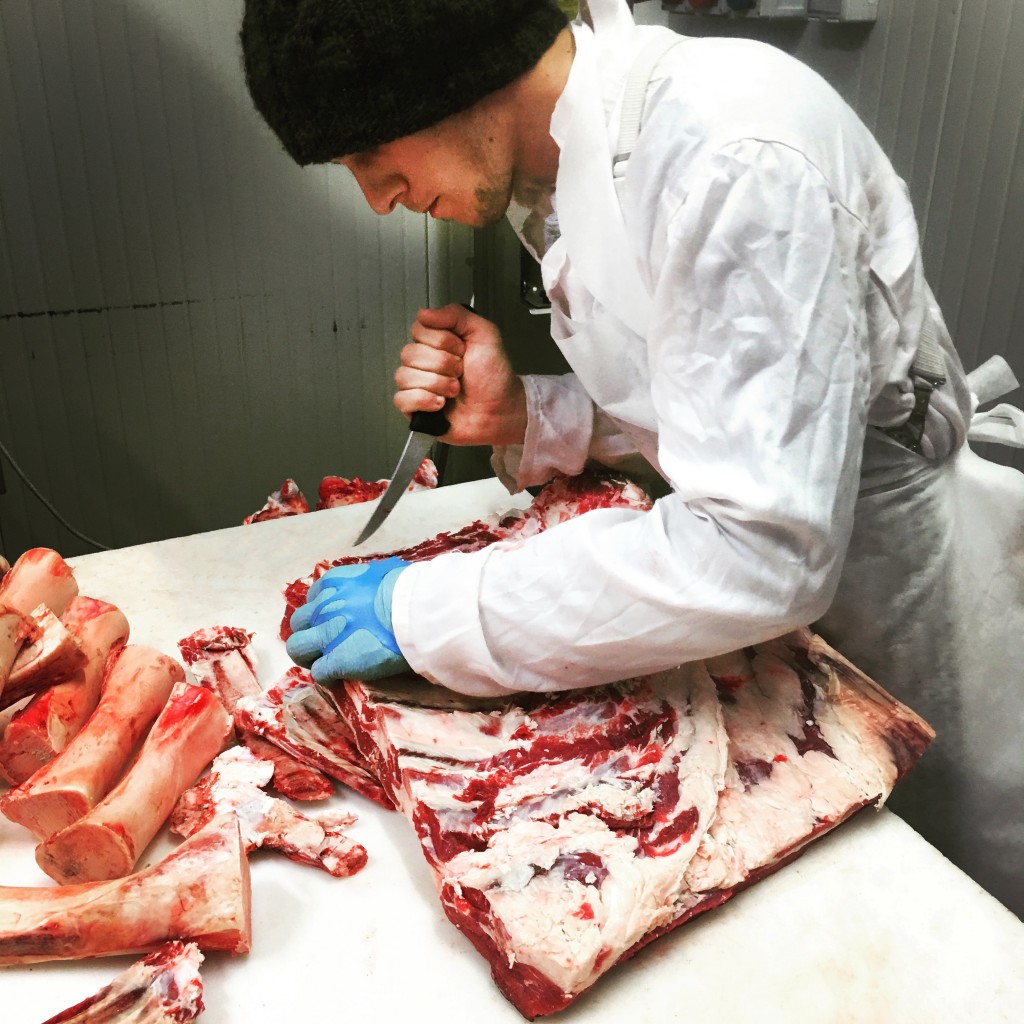I didn’t know what I was getting into. I first heard about Roskilde festival on my first trek into Denmark. From what I could gather from my Viking friends, it sounded like a pretty wild music festival where people dressed Amish-ish. Roskilde is, in fact, the largest annual music festival in Europe. Over 135,000 people travel to the old capital of Denmark for a week long non-profit festival dedicated to celebrating music, culture, and humanism. It spans over 8,000 acres, so that means an endless sea of tents, people, food, and music.
About a month ago, Michael Museth, owner of Folkets Madhus gave me a call. For the past five years, Folkets Madhus had been a food vendor at Roskilde Festival and this year he was short on volunteers. That's all I needed to hear. Within a week, my Old Gringo boots touched down in Copenhagen.
I didn’t have much time to catch my breath or unpack my backpack – my second day was spent in the kitchen preparing for a separate catering event for 250 people. In between, my good buddy Gustav and I finished prepping everything for the festival: over 100 kilos of minced meat for the famous “He-Man Chili" and another 100 kilos of Danish BBQ.
As far as Danish BBQ, remember, we aren’t in the Lone Star state.
Danish BBQ hanging in the cold smoker.
Danish BBQ is different from traditional Texas BBQ. Michael and Gustav had started on a test batch before I arrived - beef short ribs were salted with copious amounts of paprika, chili powder, and other spices then cold smoked for days. The final product was slow-cooked in the oven.
Not "Aaron Franklin style" but surprisingly was pretty damn good.
SUNDAY - DAY 1
Sunday was officially the first day of Roskilde Festival. Campers who numbered in the thousands and had been waiting for days to score the perfect site to pitch their tents were turned loose. Food vendors were given the green-light too, so the Folkets Madhus team moved in our equipment and setup our tents. Gustav and I broke away to the Northern countryside to pickup his "camplet" which proved to be a lifesaver. Rain was forecasted, and I had heard countless tales of “Roskilde 2007" - the year, Roskilde received over 4 inches of rain, and the festival turned into a mud-bowl.
One of the many campsites at Roskilde - over 130,00 campers!
MONDAY - TUESDAY
As a volunteer, I was required to work a minimum of 6 hours a day. In return, I was given a free pass to the festival's musical acts. So everyday after our shift was over, we meandered over to the small stages to catch shows. I ended up seeing Foo Fighters, Ice Cube, and Justice, and to my surprise, a band called CcSquele. As it turned out, one of Folkets Madhus's own food runners was "secretly" in the band.
He "forgot to mention it," but he is a pretty big deal. He plays a total of six instruments, and he rocked the drums that night.
One of the smaller stages at Roskilde festival.
WEDNESDAY - Day 4
On Wednesday, the inner circle which included the Orange Stage and the main food court opened. I got into the kitchen for the second shift of the day and was tasked with making an atrocious amount rice and potatoes. Rico held down the other end of the kitchen by making He-Man Chili and doing great impersonations of Salt Bae. That night, the Orange Stage opened up with The Weeknd.
The main food hall where we were stationed.
The famous "He-Man Chili" of Folkets Madhus.
Clever, huh?
Flæskestegssandwich, a true Danish treat.
The history buff in me has to break out for a bit: The Orange Stage was originally part of the Rolling Stones 1976 European Tour. At one point, Queen used it until finally, the tent found its way to the Roskilde Festival. Its iconic color and shape have become the festival's logo ever since.
The Orange stage in action.
This is what it looks like when the Amish Camp meets Game of Thrones Camp.
By the end of the week, the fairgrounds were pretty muddy.
Tents for days!
Tent tearing down time.
That day, I worked the opening shift and just as I was scheduled to be relieved things got crazy busy and Michael asked me to stay for another shift. There was only one thing to say. This is the guy that has put a roof over my head and food in my mouth. He has done an incalculable amount for my career. Without a second thought, my apron remained on for another shift until festival goers started questioning if I ever left the stand!
Honestly, I didn’t mind. I was having fun and learning more about this side of the meat business.
It was a memorable week. We sold a bunch of He-Man Chili and BBQ, listened to some great music, and made memories that I will always keep with me. I am humbled by my Danish friends who allowed me to partake in this cultural experience with them. As always, they are the best of hosts. Check out my short Roskilde Festival video as well!
My Roksilde/Folkets Madhus crew - Thanks for the great festival guys!








































